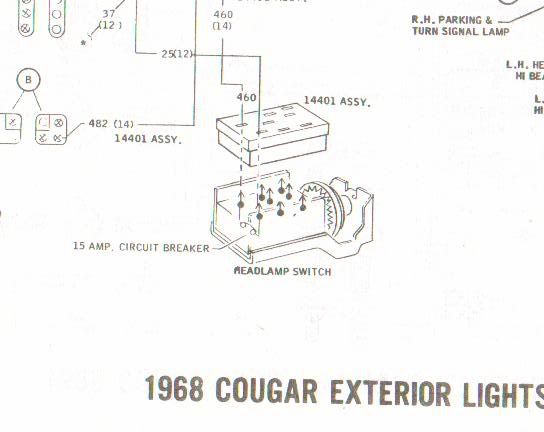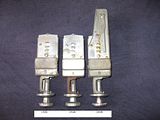P
PNewitt
Guest
I have a few research questions for anyone who wishes to take them on. This is for the book. Upon the trip back from Washington, I reviewed what I had so far, and came up with a few remaining loose ends that perhaps owners of the original cars could answer. Thanks for your help with any of this.
Here they are:
1. '67 Taillight frame holes: Who knows when Shelby went from exposed holes in the aluminum frames for the '67 Cougar lights (for the '67 Shelby), to no visible holes when the frame assemblies included attached threaded studs? Also- the date of change from inboard to outboard grille high beam lights (this is to narrow the production date of Little Red).
2. Any info on photographer "Pete Biro"?
3. Anyone ever see a '67 Shelby De Mexico coupe? It looks quite a lot like Little Red.
4. Any explainations for why Ford dropped the 427 and Tunnel Port 302 for '68?
5. Anyone in So Cal ever see or know of a 1968 Parnelli Jones Torino?
6. Anyone have a Factory-installed in-dash tachometer, with an automatic, and small block (or six cylinder?)
7. I'm looking for any rear (taillight) fiberglass panels that seem to be about 1/2 inch farther away from the metal '68 Mustang taillight piece than "normal". That is, when you look at the gas cap, the fiberglass panel doesn't seem to be flush with the base of the pop-off gas cap (by about 1/2"). This is a production variation with early production GT/CSs.
8. 1968 Cougar XR-7G production began when?? And at which plant(s)?
9. Anyone have a decent copy of the "FDAF" (Ford Dealers Advertising Fund) Logo??
10. I need a good, clear, sharp photo of someone's TV set in 1968. A good shot of the television in a living room. Perhaps a good old family photo. A console TV would be best.
11. I need a good past article, or page out of a Mustang book on how to decifer a (1968) build sheet (which I'll ask for permission to use)
12. (Without anyone going out and hurting themselves to answer this question): What is the fastest you've driven your stock GT/CS? (excluding drag cars).
13. Anyone have a primered inside of their trunklid? (original, factory only)
14. Anyone have a factory--or dealer installed rear-mounted antenna? (power type?)
15. Anyone have unusual factory and/or dealer options (like hood tachs) remote trunk release, vanity mirrors, etc..etc..
That's all for now. Thanks!
I'm getting close!
Paul.
Here they are:
1. '67 Taillight frame holes: Who knows when Shelby went from exposed holes in the aluminum frames for the '67 Cougar lights (for the '67 Shelby), to no visible holes when the frame assemblies included attached threaded studs? Also- the date of change from inboard to outboard grille high beam lights (this is to narrow the production date of Little Red).
2. Any info on photographer "Pete Biro"?
3. Anyone ever see a '67 Shelby De Mexico coupe? It looks quite a lot like Little Red.
4. Any explainations for why Ford dropped the 427 and Tunnel Port 302 for '68?
5. Anyone in So Cal ever see or know of a 1968 Parnelli Jones Torino?
6. Anyone have a Factory-installed in-dash tachometer, with an automatic, and small block (or six cylinder?)
7. I'm looking for any rear (taillight) fiberglass panels that seem to be about 1/2 inch farther away from the metal '68 Mustang taillight piece than "normal". That is, when you look at the gas cap, the fiberglass panel doesn't seem to be flush with the base of the pop-off gas cap (by about 1/2"). This is a production variation with early production GT/CSs.
8. 1968 Cougar XR-7G production began when?? And at which plant(s)?
9. Anyone have a decent copy of the "FDAF" (Ford Dealers Advertising Fund) Logo??
10. I need a good, clear, sharp photo of someone's TV set in 1968. A good shot of the television in a living room. Perhaps a good old family photo. A console TV would be best.
11. I need a good past article, or page out of a Mustang book on how to decifer a (1968) build sheet (which I'll ask for permission to use)
12. (Without anyone going out and hurting themselves to answer this question): What is the fastest you've driven your stock GT/CS? (excluding drag cars).
13. Anyone have a primered inside of their trunklid? (original, factory only)
14. Anyone have a factory--or dealer installed rear-mounted antenna? (power type?)
15. Anyone have unusual factory and/or dealer options (like hood tachs) remote trunk release, vanity mirrors, etc..etc..
That's all for now. Thanks!
I'm getting close!
Paul.




